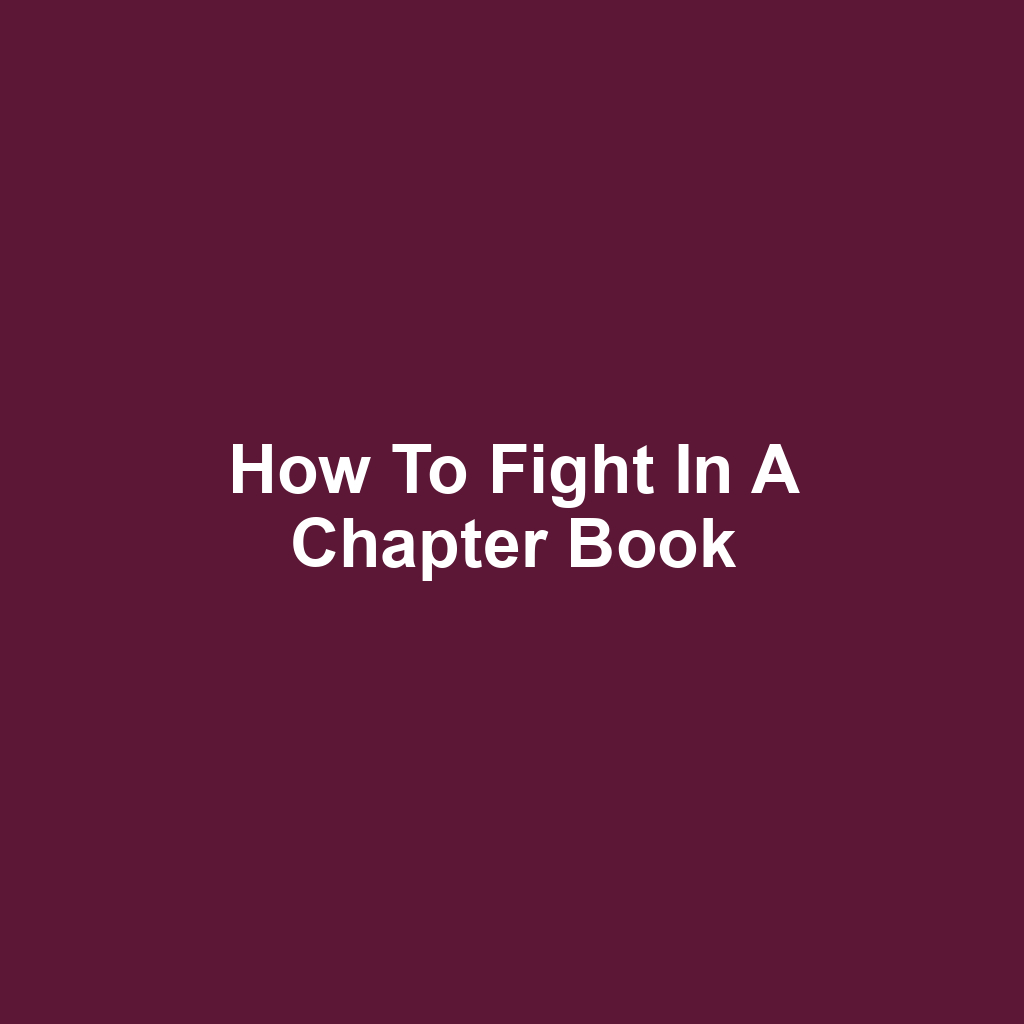When you’re writing a chapter book, you might find yourself wondering how to fight chapter effectively to captivate your readers. It’s not just about the action; it’s about understanding the purpose behind those fight scenes and how they contribute to your story. You’ll need to build tension and stakes that keep your audience on the edge of their seats. Crafting realistic fight choreography is crucial, but don’t forget to integrate your characters’ emotions to make the scene resonate. By enhancing your story arc through conflict, you can create a compelling narrative that keeps your readers engaged from start to finish.
Understanding the Purpose of Fight Scenes
Understanding the purpose of fight scenes can deepen your connection to the characters and elevate the story’s tension. They’re not just about physical conflict; they reveal character motivations and growth. You’ll find that a well-placed fight can highlight internal struggles, making the characters more relatable. Each punch thrown and block made can symbolize larger battles within the story. When you see characters facing off, you’re witnessing their fears, desires, and vulnerabilities. This emotional layer adds depth, making the stakes feel higher. You may also notice how these scenes can shift the story’s pace, creating urgency and excitement. Remember, the aftermath of a fight can be just as significant as the fight itself. As you explore these dynamics, consider how to effectively build tension and stakes in your narrative.
Building Tension and Stakes
Building tension and stakes in your story makes readers anxious to see what happens next, and you want that excitement to keep them turning the pages. You should create a sense of urgency that compels your characters to act. Every decision they make needs to feel weighty and significant. As the stakes rise, so does the emotional investment of your readers. Don’t shy away from putting your characters in perilous situations. Each challenge they face should push them to their limits, making the outcome uncertain. You can use cliffhangers and unexpected twists to heighten the drama. The more invested your readers feel, the more they’ll want to know what happens next. Ultimately, it’s about crafting a narrative that keeps them on the edge of their seats.
Crafting Realistic Fight Choreography
Crafting realistic fight choreography requires you to visualize each movement and think about the physical limitations of your characters. You’ll want to consider their size, strength, and skills, as these factors will influence how they move. It’s essential to balance the action with the characters’ emotional states, so their motivations shine through. You can incorporate elements like fatigue and injury to heighten the realism of the fight.
Try breaking the fight down into a series of smaller moments, focusing on specific actions and reactions. You should also think about the environment, as it can impact the fight dynamics significantly. Keeping the pacing in mind will help maintain tension and keep readers engaged. Don’t forget about the aftermath; how does the fight affect your characters moving forward? Ultimately, your goal is to create a believable and thrilling experience that resonates with readers.
Integrating Character Emotions
Integrating character emotions into a fight scene can make the conflict feel more intense and relatable for your readers. You should consider what your character’s motivations are in that moment. Are they fighting out of fear, rage, or desperation? Each emotion can shape their actions and decisions during the fight. When they feel scared, their movements might be frantic and uncoordinated. If they’re fueled by anger, their strikes may become more aggressive and reckless. You can show their inner thoughts to reveal how they’re processing the chaos around them. This emotional layer can heighten tension, making readers root for your character. Ultimately, emotional stakes can turn a simple brawl into a gripping climax.
Enhancing Story Arc Through Conflict
Conflict can elevate your story arc, drawing readers deeper into the characters’ struggles and triumphs. You’ll want to introduce tension early on, setting the stage for what’s to come. As the stakes rise, your characters’ decisions will become more critical, showcasing their growth. It’s essential to create obstacles that challenge them, forcing them to confront their fears. You can weave in internal conflicts alongside external ones, adding layers to the narrative. Each confrontation should reveal something new about your characters, pushing them toward transformation. Don’t shy away from unexpected twists; they’ll keep readers on their toes. By the climax, tensions should peak, leaving readers breathless. Ultimately, resolution brings satisfaction, tying back to your characters’ arcs and growth.
Frequently Asked Questions
What are some common clichés to avoid in fight scenes?
When crafting fight scenes, it’s best to steer clear of clichés like the hero suddenly discovering an untapped power or the villain revealing their plan mid-battle. Instead, focus on unique character actions and realistic consequences to keep your readers engaged.
How do cultural backgrounds influence fight styles in literature?
Cultural backgrounds can shape characters’ fight styles by reflecting their heritage, values, and historical influences. When you consider these elements, it adds depth and authenticity to the action, making it more relatable for readers.
What role do sound effects play in depicting fight scenes in a chapter book?
Sound effects can really enhance the intensity and realism of fight scenes, drawing you deeper into the action. They create a vivid atmosphere that makes you feel like you’re right there in the middle of the chaos.
If you’re looking to enhance your understanding of equipment maintenance, I highly recommend visiting this page on how to check engine hours. It provides valuable insights that can help you keep your machinery running efficiently. Don’t miss out on this important information!
